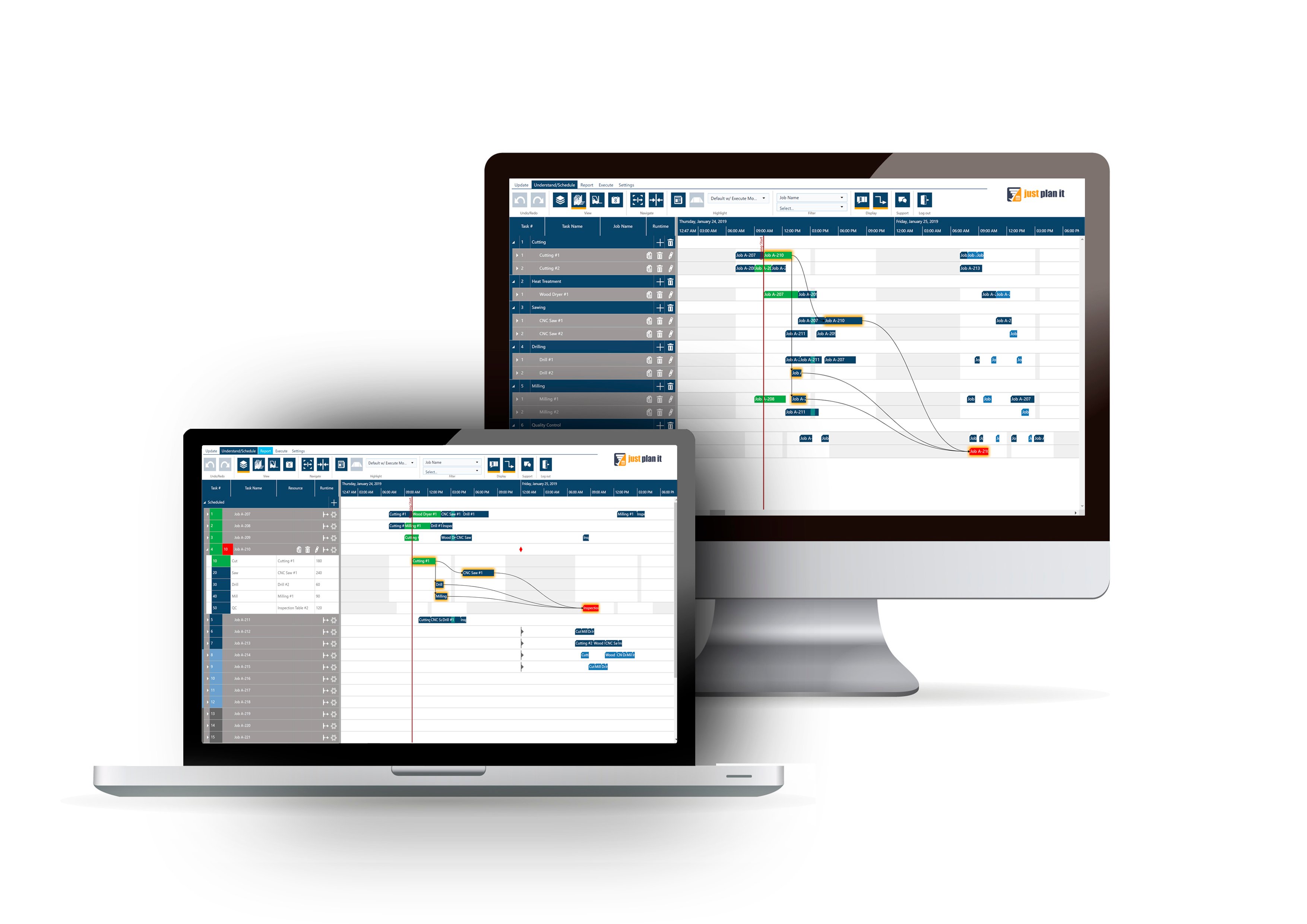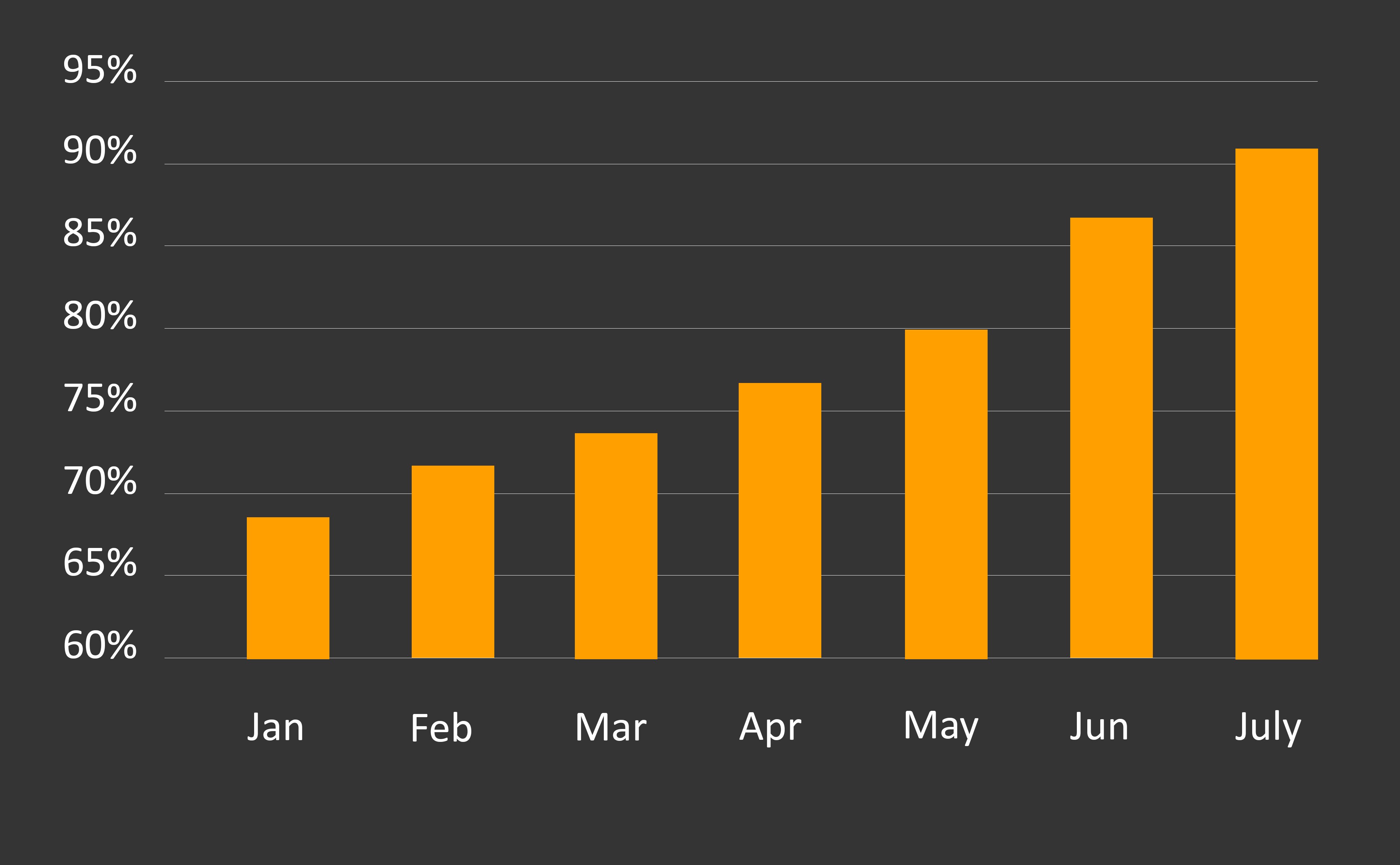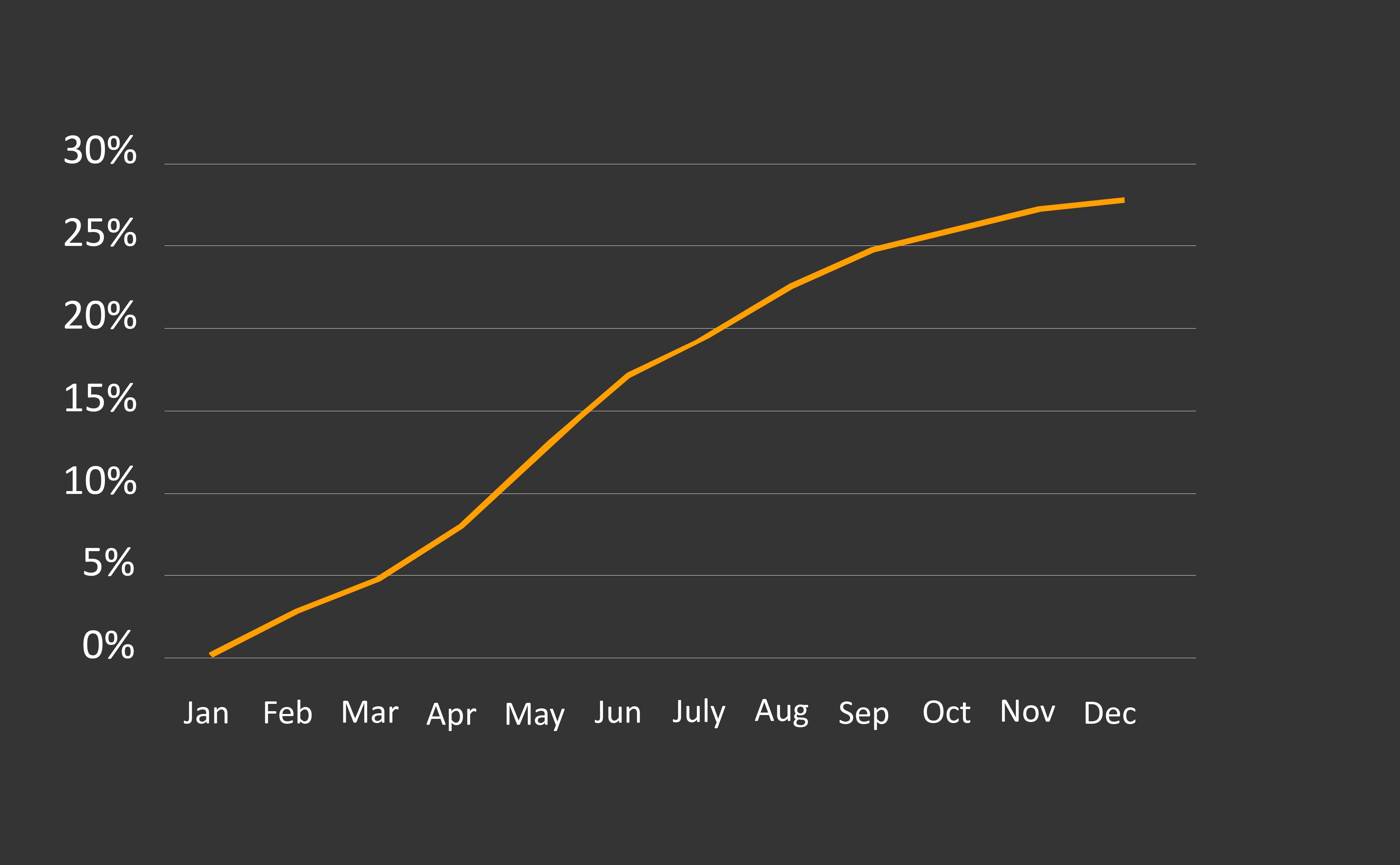Menu

Job shops are characterized by the high-mix, low-volume nature of their manufacturing processes. For job shops, change is the only constant element. Hence, many scheduling techniques that are proven in flow shop or series production environments fail in job shops. A technique that consistently has been yielding tangible results for job shops is visual job shop scheduling. This blog post unveils six unprecedented visual job shop scheduling benefits.
In essence, scheduling is a process of matching supply and demand.
In the case of a job shop, it matches the demand for a shop’s capacities resulting from the customer orders with the available capacity. When done properly, delivery times are met and resources are used effectively.
Visual scheduling is the process of achieving this match visually. It uniquely combines the best of both worlds. It brings together
As such, it predominantly provides transparency and lets the scheduler understand the complex scheduling mechanisms that happen behind the scenes.
That way, visual job shop scheduling puts the user into the forefront of everything, and the scheduler and planner into the driver’s seat. If you want to learn more about job shop scheduling, please have a look at our ultimate guide to visual job shop scheduling.
A picture is worth a thousand words. A visual schedule is a picture. It is a picture of what is going on on your shop-floor, and what will be happening on your shop-floor.

It lets you quickly see which jobs are running late, and which jobs are in danger of running late. It also helps you to understand dependencies and to easily spot bottlenecks.
And by the way: understand is the important word here. Transparency enables understanding.
Once you fully understand your schedule, the dependencies, and potential threats, you can easily take countermeasures.
The good thing is – a schedule always is directed to the future. Hence, visual scheduling allows you to spot issues before they occur so that you can also take preventive countermeasures.
When we onboard new customers, we regularly interview them and ask what keeps them up at night. The most commonly given answer is: “We struggle with keeping our delivery time commitments. As a consequence, we are in constant fire-fighting.”
Visual scheduling combines the sophistication of automatic scheduling with the ease of a Gantt chart based scheduler.
With proper automatic scheduling, new jobs are added to your existing schedule automatically – taking into account finite capacities, your shop calendar, and potential machine downtimes. In the second a new job hits the visual job shop scheduling software, you see the realistic delivery date.
This is what you can communicate to your client. Important is: this is a realistic date.
And it gets even better: with a combined automatic and visual scheduling software, you can give that job a higher priority. This gives you to types of information:
With this ability to give realistic delivery time commitments, your OTD will skyrocket (our customers repeatedly achieve OTD > 90%) … and you will be able to run your entire shop much smoother.


Let’s allow for a bit of theory. Within the mathematical theory of probability, there is a discipline called “queuing theory”. An important finding within this discipline is Little’s Theorem. In general, it says that the long-term average number L of customers in a stationary system is equal to the long-term average effective arrival rate λ multiplied by the average time W that a customer spends in the system.
Let’s bring this over from customers in a shop to production orders in a job shop. In this context, the appropriate way of phrasing Little’s Theorem is:
There is a direct correlation between the amount of work-in-process and the lead time. The higher the WIP, the longer the lead times.
So, the more jobs you have waiting for their turn, the longer the average queuing time, and hence the longer the lead times.
How does visual job shop scheduling help?
The answer is transparency. Precisely: visual scheduling lets you easily identify bottlenecks. This is not trivial as bottlenecks – due to the nature of job shops – keep on changing.
However, once identified, you can apply counter measures (such as subcontracting) and eliminate bottlenecks, which in your case most likely are just temporary.
With eliminating bottlenecks, you can cut lead times (our customers repeatedly manage to get their lead times down by at least 20%).

The correlation is obvious (even without adding more theory): if you manage to cut down lead times and if you keep your capacity at the same levels, you manage to get done more in the same amount of time.
Another way of phrasing it: by cutting lead times, you can increase your throughput. This alone is another benefit of visual job shop scheduling (and our statistics show that our customers repeatedly achieve this).

Let’s put the four benefits I discussed into a shaker, mix it, and create a well-tasting cocktail of it. This cocktail is the potential of making more revenue thanks to visual job shop scheduling. Let’s be precise: more revenue with the same machines and the same resource.
Hence, this top-line growth directly turns into bottom-line growth. How’s that possible?
Just recap:
In essence, we observe that our customers – as a result of 1 to 4 – feel comfortable taking more orders in. Orders that they would have declined before as they lacked transparency and were in a constant firefight.
 After all these tangible benefits, I like to conclude this post with an intangible, but invaluable benefit.
After all these tangible benefits, I like to conclude this post with an intangible, but invaluable benefit.
Visual job shop scheduling gives you control over what is happening on your shop-floor. You have less fire-fighting, you get fewer distractions from unplanned incidents resulting in big chaos and hence you have less stress.
If “keeping delivery times” keeps you up at night, try visual job shop scheduling. It bears some potential to even improve the quality of your sleep.
just plan it is a production scheduling software plus scheduling tools & best practices to help high-mix low-volume make-to-order manufacturers gain transparency and control over their shop operations. The software plus its methodology is used by thousands of people around the globe. They consistently achieve improved on-time deliveries, shorter lead times, and better utilization of their resources.
As just plan it is not just software, but a lot of processes and best practices, we recommend that you start with an exploratory meeting. If we agree that there is a fit between your requirements and our approach, we'll build a prototype for you.
Hence, it all starts with a meeting. Book that meeting now.
These Stories on Job Shop Scheduling
Made with by BOYUM IT SOLUTIONS GmbH (Copyright © 2024) Read our Privacy Policy & Terms of Service
No Comments Yet
Let us know what you think